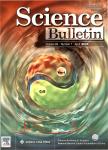Y-chromosome Peruvian origin of the 500-year-old Inca child mummy sacrificed in Cerro Aconcagua (Argentina)
Y-chromosome Peruvian origin of the 500-year-old Inca child mummy sacrificed in Cerro Aconcagua(Argentina)作者机构:Unidade de XeneticaInstituto de Ciencias ForensesFacultade de MedicinaUniversidade de Santiago de Compostela (USC)and GenPoB Research GroupInstituto de Investigaciones Sanitarias (IDIS)Hospital Clinico Universitario de Santiago (SERGAS)GaliciaSpain Equipo Argentino de Antropologia ForenseIndependencia 644-3AEdif.EME1CordobaArgentina Translational Pediatrics and Infectious DiseasesHospital Clinico Universitario de SantiagoSantiago de CompostelaSpain GENVIP Research Group (***)Instituto de Investigacion Sanitaria de SantiagoGaliciaSpain Instituto Etnologico de la Universidad Nacional de Cuyo (UNC)MendozaArgentina
出 版 物:《Science Bulletin》 (科学通报(英文版))
年 卷 期:2018年第63卷第22期
页 面:1457-1459页
核心收录:
摘 要:A frozen mummy was found in Cerro Aconcagua (Argentina)in 1985(Fig.1a-c).Archaeologists identified this mummy as a seven-year-old Inca sacrifice victim living at the time of the Inca Civilization about 500years ago [1].The child was sacrificed following an Incan ritual known as *** complete mitochondrial DNA (mtDNA) genome of this mummy was recently analyzed in Gomez-Carballa et al.[2].This mitogenome belongs to a new sub-branch of the Native American phylogeny named C1bi dated to approximately 14 thousand years ago (loja).Information retrieved from a large database of mtDNA profiles indicated the existence of a few closely related haplotypes in Peru (including one haplotype retrieved from ancient DNA of an individual belonging to the Wari Empire)and the Aymaras from *** these data suggested a Peruvian Inca origin for this C1bi haplotype,in good agreement with archaeological reports [1].



